
11 Tips on Crafting Engaging and Effective Social Media Ads
Social media is now at the center of many companies’ marketing campaigns. Given the popularity of social channels, as well as their wide usage, these are the perfect platforms to reach and attract new customers. Now that businesses have the opportunity to pay for social media ads that appear on the screens of users, this has become a must for every marketer out there.
Why wouldn’t it be?
As of October 2022, there are 4.74 billion people on social media. This accounts for over half the world’s population. And it’s not just about the number of users, either - people spend plenty of time on it! On average, people spend at least 2.5 hours every day on social platforms.
It is evident that social media is now a massive part of our lives. For businesses, this is a way to reach many of their targeted audience, attract more leads, and make more sales. However, this is easier said than done.
If you are looking to improve your success in social media marketing, developing a good strategy is essential. In this article, you’ll learn 11 tips that will optimize your social media ads.
Here is what we will cover:
- Build user personas to target them in your social media ads
- Create video content
- Add subtitles to your videos
- Organize your design assets
- Make sure you have the right sizing ratios for your images
- Keep it short
- Research your competition
- Pick your platforms wisely
- Design with mobile users in mind
- Do social media listening
- Always keep tracking and analyzing
Want to learn more? Let’s dig into these.
1. Build user personas to target them in your social media ads
When you create your ads on platforms like Facebook, you’ll be given choices of countries, ages of users, and many other things that narrow down the ad’s audience. Social platforms can’t show your ads to everyone in the world, which is why you need to identify your target audience.
If you want your ads to get to the people that are most likely to click on them, you need to create a user persona. In case you don’t know what are user personas, Maze has a detailed guide on this topic. It’s also a top-rated source for user persona templates, which will make this much simpler for you.
Video from Maze
Simply put, a user persona is a profile for your target user. It’s an imaginary person for which you know a lot of things such as their behavior patterns, demographics, problems, skills, and even some background information.
User persona enables you to reach the right audience with your ads. Unless you know who will show interest in your advertisements, you can’t target the right people and tell social platforms who to show your ads to.
According to Maze, a good user persona should have the following:
- Picture
- Name and age
- Location
- Education level and job status/title
- Marital and family status
- Wants and needs
- Pain points and problems
- Personality traits
- Social media channels they use or prefer
Here is an example of one type of persona:
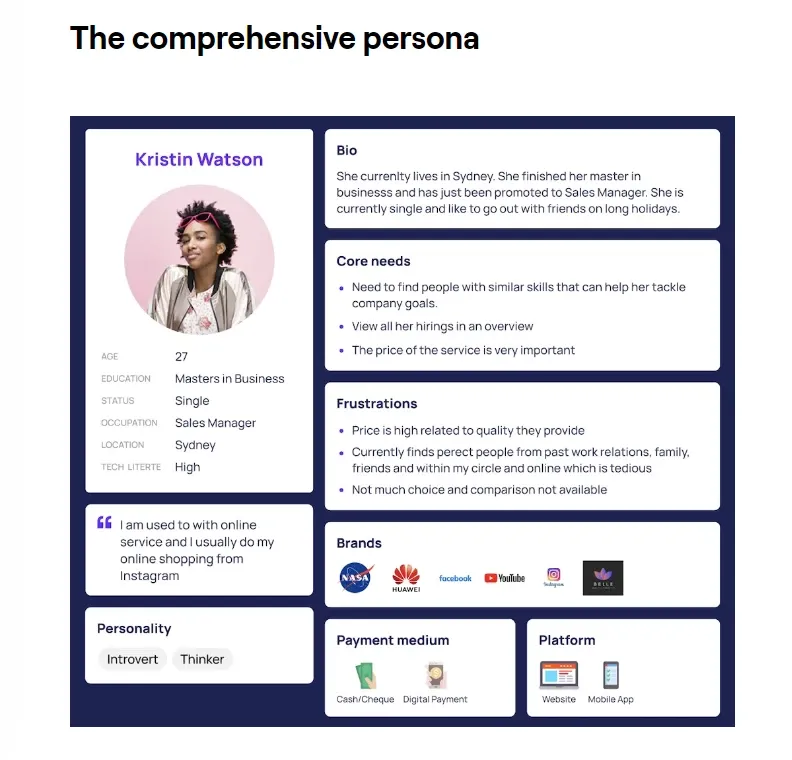
Image from Maze
2. Create video content
Massive walls of text were never attractive to users. Today, even short blurbs that used to work before are overseen by many in the targeted audience. Videos are the preferred form of content these days, especially on social media. Create clip with engaging video content that tells a story and captures the attention of your audience.
People today are 10 times more likely to interact with video content than text. They enjoy watching videos. The average user spends 100 minutes every day watching video content. This means that many in your targeted audience will skip your written ads, but will be intrigued to click play on your videos.
They don’t even have to click play with social platforms like Instagram and Facebook and their story advertisements. Business ads on Instagram, for example, account for 36% of stories that users see.
Here are a few reasons to use videos in your social media ads:
- It gets you more engagement and exposure
- It is currently trending across many social media platforms
- Can share your message in a short time
- Has the potential to become viral
3. Add subtitles to your videos
People need subtitles for many reasons. For starters, 69% of users view videos without sound. They do this because they are in a public place, in a crowded location, or simply because they don’t like the noise. Research also shows that 80% of Americans will watch a full video if captions are available.
We should also not forget the people with disabilities. How do you expect the deaf people in your audience to get the message from your video ad on social media? The answer lies in Happy Scribe’s video subtitle generator - the simplest way to add captions to every video you make.
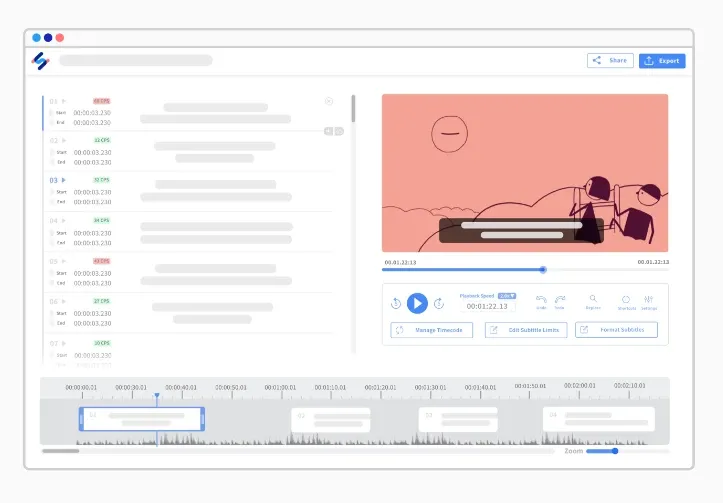
Image from Happyscribe
This subtitle generator will make it possible for you to autogenerate subtitles for every video in your marketing campaign within minutes. You can then customize the captions, position them, change their appearance, and make changes if needed.
Adding subtitles to your videos makes them more accessible and inclusive. But, captions aren’t just for your audience with disabilities. 80% of people that use captions in videos do not have a hearing impairment.
Take a look at these numbers:
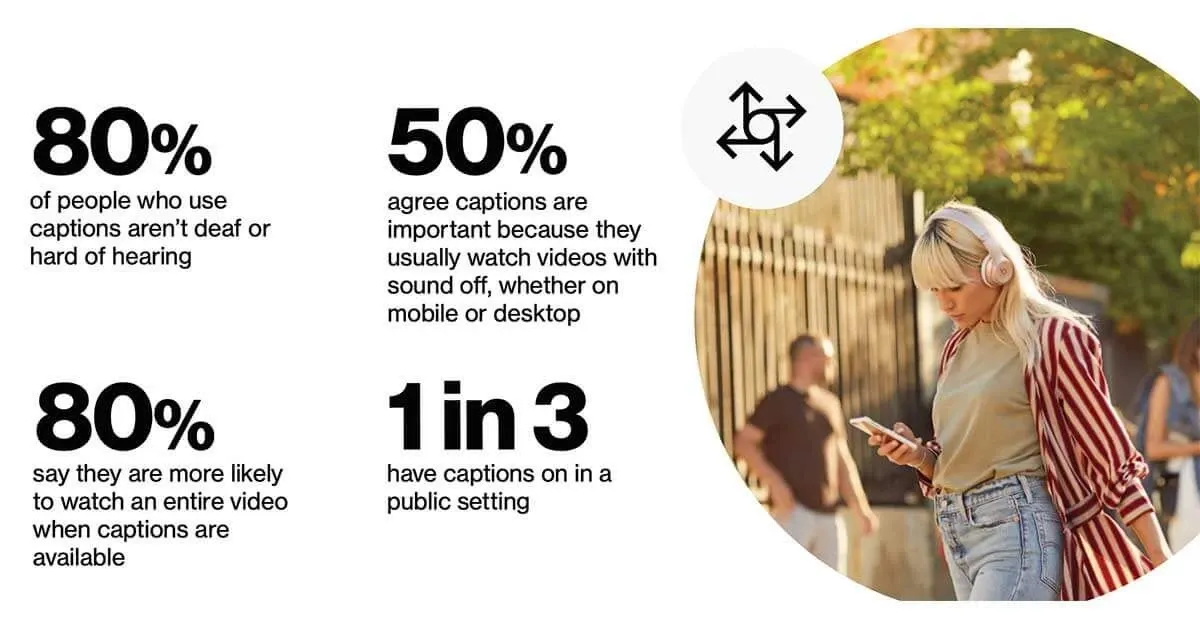
Image from Streamingmedia
4. Organize your design assets
All those visuals that you’re adding to your social media ads take up place and are very hard to keep track of. What you need is a proper organization of your ideas and images.
If you’re frequently advertising things on social media, it can be a fuss to collect them from websites, store them, and look for them when you need them. Eagle solves this with style and efficiency.
In Eagle, you can categorize your images in any way you want. Do you have custom designs you often use in your marketing campaigns - or just want to keep them safe and accessible? Would you like to be able to find a design within seconds, at the right time, instead of losing them all the time?
This is what Eagle offers you and here is what it looks like:
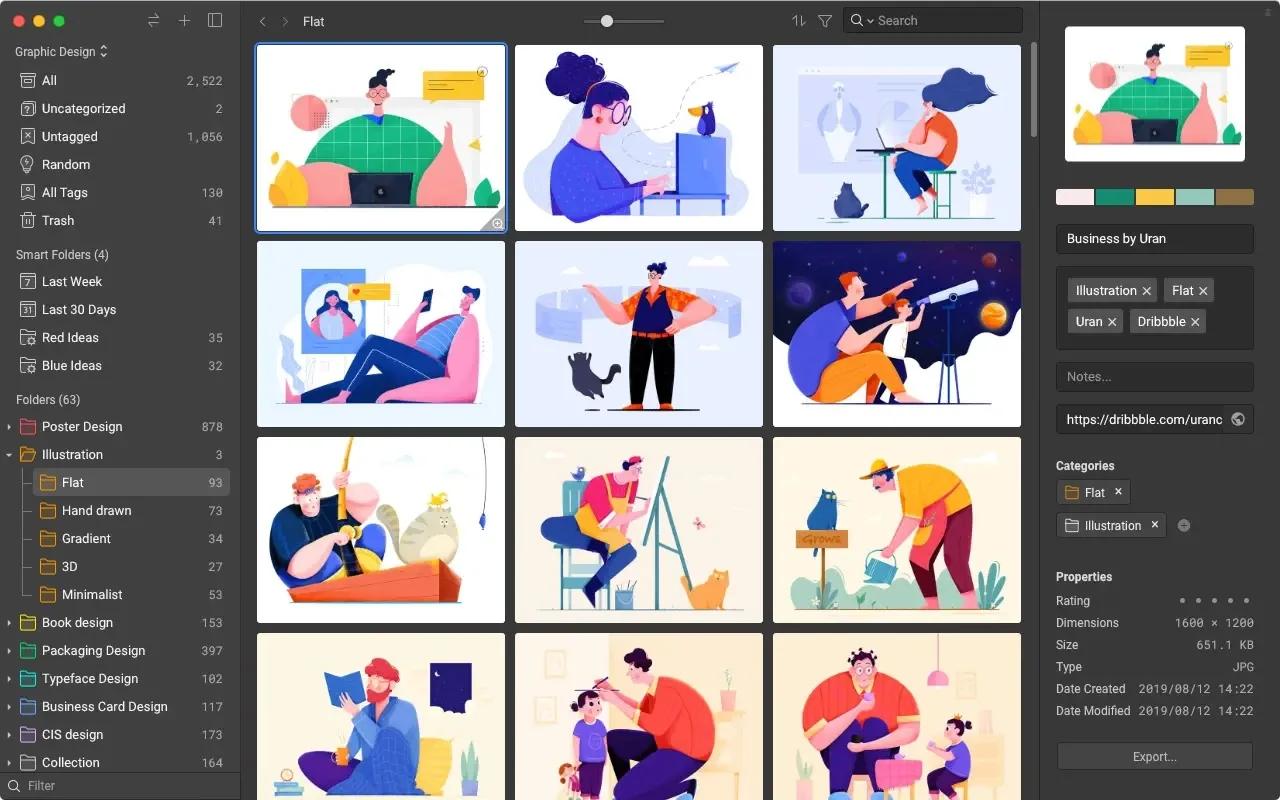
Image from Eagle
5. Make sure you have the right sizing ratios for your images
Social media platforms often require differently-sized images for the PPC feature. Before you make an ad go live, double-check if the images in it are sized correctly for the platform you are using. This SproutSocial guide should tell you all about the different ratios, and you can use their free resizing tool to make sure the images fit the platform.
6. Keep it short
Social users are exposed to a pool of content that never ends. They won’t dedicate a lot of time to your ad, no matter how interested they are in your product or service. It can be tempting to add tons of information in an ad - but don’t. Social users have short attention spans.
The average attention span of an internet user these days is 2.5 seconds. This is how much time you have to attract their attention and share your message. So, keep it short and to the point. Make sure that the social media user will instantly understand what your ad is about. Use lead magnets only, as well as a clear CTA they can click on if they want to learn more.
After all, that’s what your website is about - to tell them more!
7. Research your competition
Unique ads can attract a lot of attention, but that doesn’t mean that you shouldn’t keep track of what your competition does! The successful competition must be doing something right if they are attracting many people to buy from them. Do a deep analysis of their social media advertisement to find out what works - and what doesn’t.
Based on what you see, you can create something of your own - unique, yet proven to be a success. This is a great source of inspiration because it lets you dig into tested strategies for social media advertising.
When you’re checking your competition, look at the following:
- Search for posts that are driving the most likes, shares, and comments
- Learn what tactics your competition uses i.e. do they use influencers, do they create videos or text-based content, do they create competition ads, etc.
While you’re seeing what they’re doing, think about what they aren’t. This can give you an idea that will create unique ads for your business.
8. Pick your platforms wisely
Investing money to get ads on every social media platform doesn’t just cost a fortune - it is absolutely unnecessary! There are too many social networks for you to spread your ads all across these days. Chances are, your target audience will only use a few of them - maybe one or two.
When you’re creating a buyer persona, this is one of the things to consider - which social platform is your target audience using? Based on this information, zero in on a few social media networks.
Not only will this save you money, but it will also give you more time to focus on optimizing your advertising content for the ad in question.
After all, you can’t post the same ads on every platform - it’s not how it works!
To help you find the best channels, we’ve created a short description of the most popular social platforms for business advertising.
Mostly used by people aged between 25 and 34, Facebook remains one of the favorite places for marketers to invest in advertisements. This platform is all about communication, videos, news, and interesting information. There are over 300 million photo uploads daily and many ad placement opportunities.
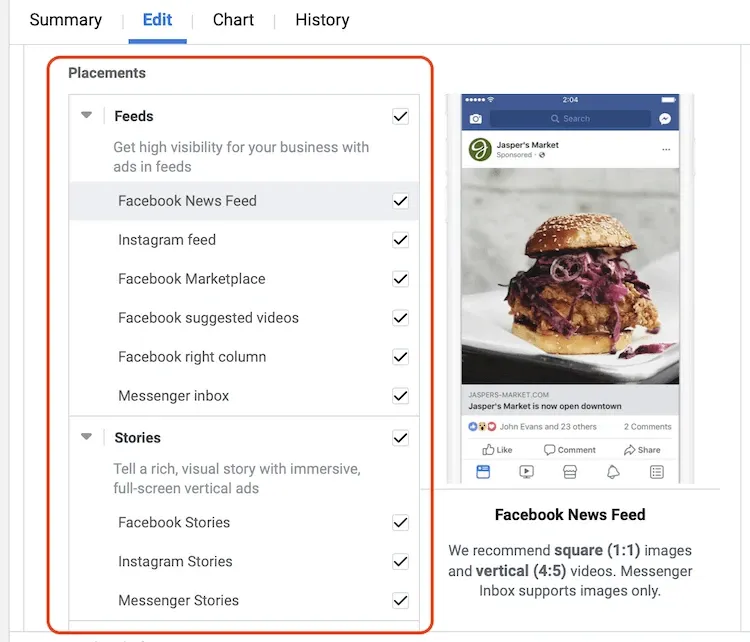
Image from Social Media Examiner
Instagram is mostly used for photography and videos. It’s most popular among millennials. It currently has over 400 million active users, and 60% of them check their accounts at least once a day.
Did you know that most of the people who use Pinterest are females? This platform’s users are 83% females interested in DIY projects, outfit ideas, recipes, and beautiful ideas. If your targeted audience is mostly in this gender or your business sells something creative and pretty, Pinterest might just be the right place for your ads.
9. Design with mobile users in mind
More than 9 in 10 people who use social media access it through their mobile phones today. This means that the majority of people who will see your ads will see them on their phones. If you don’t design your ads for small screens, they won’t be as effective as you’d want them to be.
When you design your ads, use images that look good and are easy to view on a small-sized device. Choose high-quality images that will also look good on a desktop, but check each image on your own phone before you decide on it.
Another good idea is to use geofencing to target the users on the move when they are in your zip code. If you have a physical store, too, this will give them ads from your business when they are nearby, prompting them to come to visit.
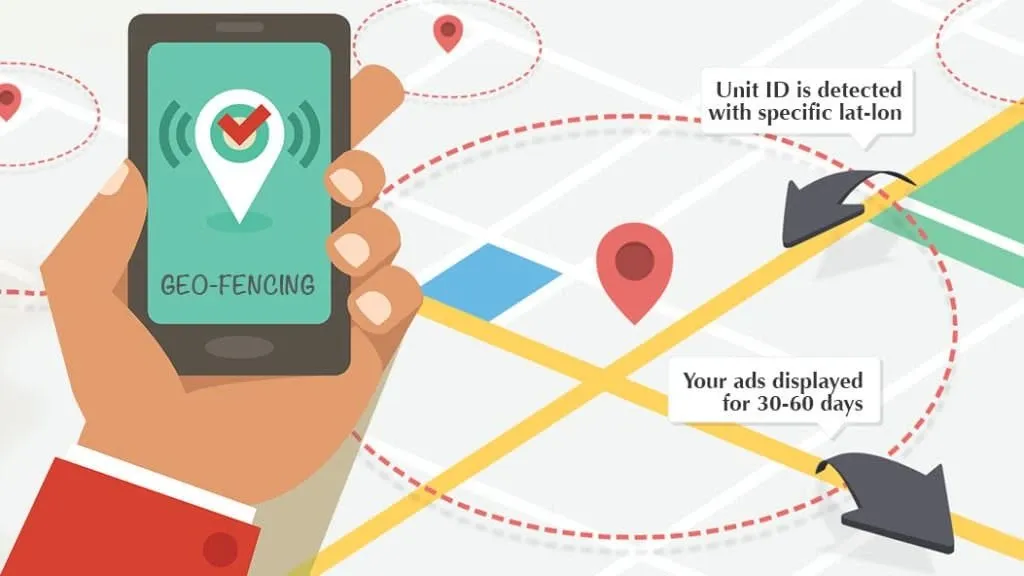
Image from Smartinsights
10. Do social media listening
Have you heard of social media listening? This is a popular method used by marketers when they want to learn more about the customer. If you do social media listening, you can get key information to improve your advertising strategy.
Social media monitoring is made possible thanks to tools like Buzzsumo and AgoraPulse. You can use such tools to keep track of trending keywords, check important conversations in your field, and take action when people comment on your brand.
Keep in mind that social listening is a work in progress. It takes time and requires constant analysis and regular tracking if you want to make it work for you.
11. Always keep tracking and analyzing
The things that worked yesterday on social media might not work tomorrow. This is why marketers need to track their ads’ performance. These tips will help you get a wider reach and more success with your ads, but that is not final. Your success can diminish as fast as it happened, which is why our last tip is to always keep tracking and analyzing.
Here are some tips for this:
- Figure out how you’ll analyze your ad performance. Invest in smart tools that facilitate this, and use platforms like Google Analytics or embedded analytics in social media.
- Establish key performance indicators. Do this from the very beginning, before you put your ads out there. This is how you’ll track your progress.
Now, let’s make people click on your social ads!
Creating a social media advertising campaign that works is not easy and it can take some time. But, with the right tricks up your sleeve (you now have them) and some strategic thinking, you can make this happen really fast. Good luck!



